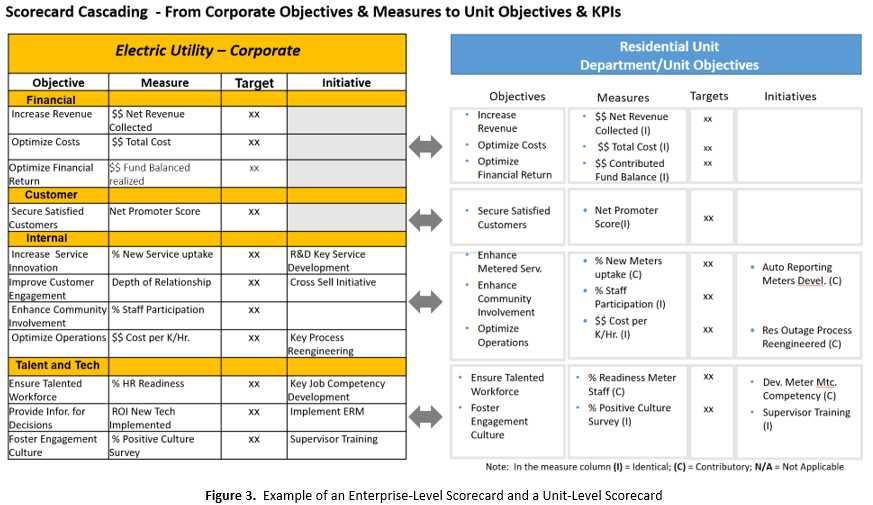The upcoming blog series will include step by step suggestions for BSC development, implementation, and execution taken from the whitepaper, “The Balanced Scorecard Refresh – Lessons from 25+ Years in the Field,” authored by Mario Bognanno, Ryan Englund, and Randy Russell. This blog series will culminate in the release of the whitepaper and live webinar: What I Wish I knew Before I Started My Balanced Scorecard Program.
The design principle “the simpler the better” allows the contributing operational tasks and key performance indicators to be addressed at subordinate levels of the organization. By cascading the Enterprise Balanced Scorecard to subordinate units (lower levels of the organization), their strategic contributions can be delegated to those who are directly responsible for executing the strategy.
This decision to cascade, or more appropriately how to cascade to subordinate units, is central to this new approach to using the Balanced Scorecard to execute strategy. The recommendation here is that in most organizations, it may not be necessary to cascade using full Balanced Scorecards (strategy maps and Scorecards). Rather, to simplify the approach, organizations may leverage the organization’s current Performance Management Program. Using the Enterprise Balanced Scorecard as the source document, Unit objectives and measures can be linked using the existing objective Setting Process.
In setting the Unit’s objectives and measures, special attention must be placed on both the internal process perspective and the talent and technology perspectives of the Enterprise Balanced Scorecard.That is because these two perspectives identify what the organization units need “to do” to achieve strategic outcomes (identification of internal process capabilities) and “what it takes to do” these things well (the human capital and technology enablers).Lead measures (defined as measures of process adherence or required behavior) are also most appropriately applied at relevant cascaded units; where the work is performed.The Unit’s financial and customer objectives and measures, where possible, can be shared with and can be identical to the Enterprise level Balanced Scorecard.(Targets would be different, proportional to the unit’s contribution.)In those cases where objectives and measures are not shared between the enterprise and the unit levels, it is useful to provide a translation of the unit’s contribution to attaining the higher-level enterprise objective.

The ability of the organization to adopt a more focused Balanced Scorecard at the highest level of the organization is based on its ability to appropriately address cascading. Figure 3 provides an example of an Enterprise-level scorecard that features just 11 strategic objectives. Cascading to a subordinate unit, is done using a traditional performance management technique. This will reduce the potential for over-engineering the Balanced Score-card execution process and burdening the administration of the Balanced Scorecard: two criticisms leveled against traditional Balanced Scorecard execution practices. Addressing the nature and scope of the cascading process (using conventional performance management techniques rather than full Balanced Scorecards) is a necessary step in reducing overall complexity of the scorecard execution process. In Figure 3 we show an example of a cascaded set of departmental objectives and key performance indicators (KPIs) that shows how the unit supports the enterprise strategy.







